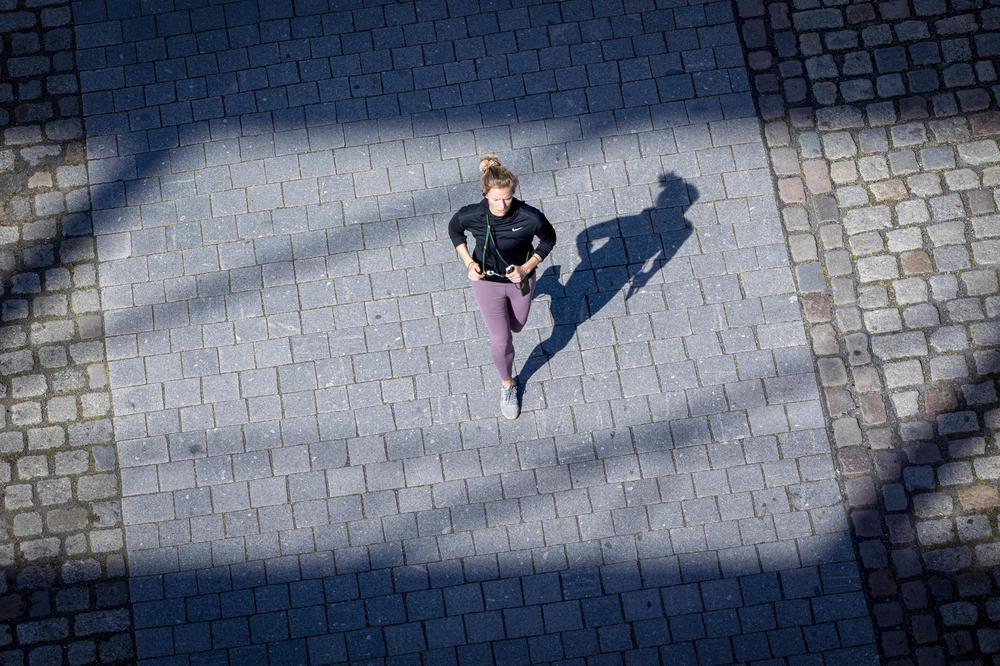Hot on the Tracks of the Novel Coronavirus
How exactly does SARS-CoV-2 spread in lung tissue and what damage does it cause?
Oct 01, 2020
Jogging keeps you healthy and fortifies your immune system – something that’s essential during the ongoing pandemic. Going out for a run doesn’t pose a risk of infection, as long as you observe social distancing.
Image Credit: Picture Alliance/Abdulhamid Hosbas
When it comes to fighting off viral and bacterial infections, the lung has it tougher than most other organs in the human body. After all, fending off pathogens – while also carrying out the respiratory processes that keep us alive – is no simple feat. SARS-CoV-2 can result in severe lung infections that restrict oxygen intake and carbon dioxide output to fatal levels. Unlike many other viral infections, the novel coronavirus also attacks the blood vessels, making it all the more deadly.
Internists at Charité – Universitätsmedizin Berlin are currently working in close cooperation with researchers from the Institute of Veterinary Pathology (Department of Veterinary Medicine) at Freie Universität to learn more about the spread, potential infection mechanisms, and effects of the novel coronavirus in lung tissue.
“We are able to identify which cells are infected with the virus”
The team headed by Professor Achim Gruber analyzes human lung tissue samples that have been grown at Charité in tissue culture plates and infected with the virus. The veterinary pathologists draw on their methodological expertise in the area of in situ hybridization in their research, which allows them to identify the virus’ genetic material in damaged and inflamed tissue. “When we put the affected tissue under the microscope, we are able to determine precisely which cells have actually been infected with the virus as well as the damage it has inflicted,” says Gruber. “You could say that we track down the virus and follow it to its target cells.” The researchers’ work is in this sense similar to trying to find a genetic fingerprint at a crime scene.
These pathological experiments are not being carried out at the laboratory with biosafety level 3 on the Düppel veterinary campus, but instead the researchers are using the same microscopes as for other animal tissue samples under lower safety certifications. “While we are analyzing samples that come from the level 3 laboratory, they have been rendered harmless using formalin-based disinfectant and thus deactivated,” assures Gruber.
The veterinary pathologists have many years of experience in researching lung infections – for example, they were involved in studies on the MERS coronavirus back in 2012. The group also boasts expertise in digitally evaluating microscopic specimens of histological changes and post-infection lung damage, having been the first researchers to establish this method in 2018. The “ScanScope” – a cross between a scanner and a microscope – first scans the tissue sample. Then the computer creates and projects a high-resolution image. This allows researchers to zoom into the tissue on the screen while precisely and automatically measuring any changes.
Investigating the Innate Immunity of Lungs
Gruber and his team – together with clinicians from Charité in another research project – are investigating how one medication works that could be used to tackle acute lung damage. “This therapy is not designed to specifically target SARS-CoV-2. It is instead intended to mitigate damage to the lung tissue caused by the virus that would otherwise result in death,” explains Gruber. The pathologists involved in the study compare treated and untreated tissue that has developed a virtually identical SARS-CoV-2 infection, describe and quantify the differences, and help to pinpoint its mechanism of action and potential side effects.
Professor Gruber has been project leader of the Collaborative Research Center Transregio 84 since 2010. The center is funded by the German Research Foundation and investigates the mechanisms of the lung’s innate immunity. This type of immunity kicks in during the first few hours and days after a viral (coronavirus or flu) or bacterial infection is contracted – in other words, long before antibodies have formed. “This is a critical period in the development of a lung infection, as Covid-19 is showing us once again,” says Gruber.
Over 20 research teams from institutions such as Charité and the Robert Koch Institute form part of the Collaborative Research Center “Innate immunity of the lung: Mechanisms of pathogen attack and host defense in pneumonia.” Professor Christian Drosten – an expert on SARS and Germany’s most well-known virologist at present – is also a member of the Charité team. “Many of the areas studied by this Collaborative Research Center over the last ten years are now coming to good use in managing Covid-19 patients and researching this illness,” says Gruber.
This text originally appeared in German on June 21, 2020, in the Tagesspiegel newspaper supplement published by Freie Universität.
Further Information
Contact
Professor Achim Gruber, Freie Universität Berlin, Department of Veterinary Medicine, Institute of Veterinary Pathology, Email: Achim.Gruber@fu-berlin.de

